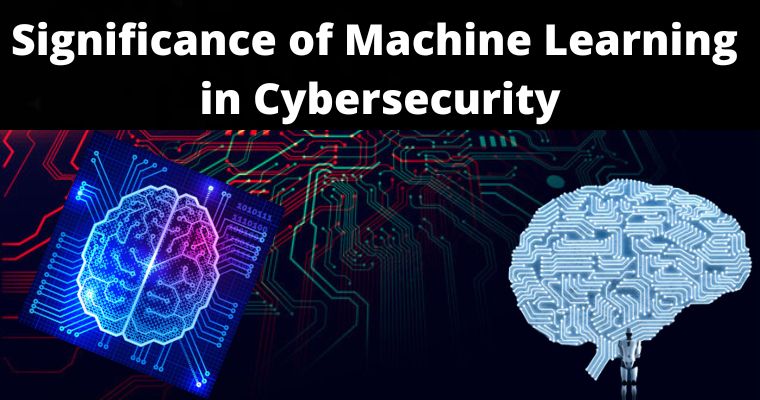Today, deploying good cybersecurity solutions is unfeasible without substantially depending on machine learning.
Simultaneously, without a robust, rich, and thorough approach to the input information, it is impossible to properly implement machine learning.
Table of Contents
Significance of Machine Learning in Cybersecurity?
There are several causes for this. Cybersecurity systems can use machine learning to evaluate patterns and learn from them in order to help prevent repeated assaults and respond to changing behavior.
It can assist cybersecurity teams in being more effective in managing threats and reacting to live attacks. In sum, machine learning has the potential to make cybersecurity easier, more proactive, cost-efficient, and effective.
However, it can only do so if the underlying data used to support artificial intelligence provide a thorough view of the world. Trash in, trash out, as they say.
Why is it so Important to Focus on Data When It Comes to Machine Learning in Cybersecurity?
Machine learning is the process of creating patterns and modifying them using algorithms.
You need a lot of smart data from all over the place to generate patterns since the information needs to reflect as many possible consequences from as many different circumstances as possible.
It’s not just about how much data there is; it’s also about how good it is. Every possible source, whether at the end, on the web, or in the cloud, must provide a comprehensive, relevant, and rich background for the data.
You must also concentrate on segregating the data so that you can make sense of the information you collect and identify results.
Data collection, Organisation and Structure
How can board members and top executives guarantee that their firms’ cybersecurity initiatives are employing machine learning effectively?
It all boils down to how you gather, manage, and organize data. Not only do you need to collect information about the risks, but you also need to gather data on everything that happened.
It must be comprehensive enough to provide information on machines, applications, protocols, and network sensors. It must provide a link between what is seen on the network and what is seen at the endpoint.
Threading all of that material together so that you get one visualization with the complete picture is a part of the task.
Then you can develop different models, model different elements of the behavior and use algorithms to decide when to give alerts, when to take action to respond to potential risks, and when to build in pre-emptive protections.
The Right Questions to Ask
For business executives, this entails asking the correct questions of their counterparts in innovation and cybersecurity. There are several essential areas on which to concentrate:
- Do they have the information they need to respond to a live attack? What kind of knowledge are they gathering—do they have data across the network, terminals, and the many clouds where data and programs are deployed?
- Is the data organized in a way that can be used for identification and decision-making, or is it just hanging there? Can they efficiently combine data from a variety of sources?
- Are your teams satisfied that by analyzing their data, they would be able to detect any network attacks? Is robotics being used for both detection and response?
One of the most difficult tasks is combining data from endpoints, networks, and the internet into a single state which can be used for artificial intelligence.
You can’t make any sense of the material that isn’t relevant or categorized for analysis if it comes from various sources, even with modern, powerful machine learning technologies.
The data must be in the same “standard” so that the techniques and models can interpret it and apply machine learning technologies efficiently.
Getting the appropriate data isn’t enough. You’ll need a tight combination of data and machine learning. Machine learning, data collecting, organization, and structure all require an integrated approach.
Machine Learning Vs. Fraudulent Hacks
There were 10.5 billion virus infections in 2018. That’s a lot of data for people to handle. Machine learning, thankfully, is taking up the slack.
Machine learning is a subset of AI systems that makes predictions about a computer’s behavior using algorithms derived from prior datasets and statistical analysis.
The computer can then adapt its behavior — and even accomplish tasks for which it was not specifically intended. It’s also been beneficial to cybersecurity.
Machine learning is rapidly being used to detect dangers and immediately eliminate them before they can cause havoc, thanks to its ability to filter through billions of data and identify extremely dangerous ones.
In early 2018, Microsoft software was said to have done just that. According to the firm, cybercriminals utilized trojan viruses to install malicious bitcoin miners on thousands of computers.
Microsoft’s Windows Defender, a program that uses numerous layers of machine learning to recognize and block suspected threats, thwarted the attempt.
Almost as soon as the crypto-miners began digging, they were shut down. Other instances of Microsoft’s software detecting these attempts early can be found.
To combat online attacks, AXA IT, a large French insurance and financial services organization, uses the cybersecurity firm Darktrace.
Darktrace’s cybersecurity offerings are driven in part by machine learning. The company’s Enterprise Immune System detects possibly dangerous anomalies by automatically learning how regular network consumers behave.
Other software, on the other hand, includes in-progress risks.
Machine learning is used to check for potential threats and automate reactions in addition to early threat detection.
And in the world of cybercrime, where one-third of all chief data security officers are said to be fully dependent on AI and immoral hackers are always looking for new methods to exploit security flaws, that’s proving to be a significant positive.
Businesses That are Using Machine Learning to Improve Their Security and Keep Hackers at Bay
Microsoft is headquartered in Redmond, Washington. Microsoft employs its own cybersecurity technology, Windows Defender Advanced Threat Defense (ATP), for preemptive protection, intrusion detection, and robotic investigation and response, among other things.
Windows Defender ATP is a built-in feature of Windows 10 that dynamically adjusts and detects threats using cloud AI and various tiers of machine learning algorithms.
Cambridge, Massachusetts is the home of the SQRRL. It employs machine learning in the following ways: After creating the open-source database program Accumulo, Sqrrl’s developers came together to form a cybersecurity startup.
Sqrrl has created a cyber-threat hunting software that scours networks for code that can circumvent security safeguards.
The solution uses machine learning to transform data points into a behavior map, which serves as a visual picture of a computer network and indicates potential hazards. Sqrrl was acquired by Amazon in January 2018 for its Amazon Web Services cloud market.
Blackberry is headquartered in Canada. Blackberry, whose web-connected handsets were once omnipresent in certain circles, has shifted its focus and now offers software and services to large corporations.
Cybersecurity technologies that use AI and machine learning to avoid cybercrime attacks and manage clients’ threat response abilities are among the business’s specialties.
BlackBerry paid $1.4 billion in November 2018 to purchase AI cybersecurity firm Cylance.
Chronicle is a cybersecurity firm founded by Alphabet, the parent company of Google. It is located in California.
Backstory, the company’s first product, was built for a world where corporations generate vast volumes of security data while struggling to acquire enough trained analysts to make sense of it.
Backstory employs machine learning to compress enormous volumes of data access (such as corporate data traffic, known rogue domains, and suspected viruses) towards more highly absorbable insights.
Cupertino, California is home to Demisto. Demisto’s security platform focuses on security coordination, automation, and mitigation, or SOAR for those in the know, to assist larger corporations and organizations in coordinating security threat response activities.
Demisto employs machine learning to prioritize early warnings in addition to offering a visual platform where consumers can monitor all alerts.
Is Machine Learning Sufficient in Preventing Cybercrime?
Machine learning excels at particular tasks, such as scanning vast volumes of data fast and interpreting it with statistics.
Cybersecurity devices create massive amounts of data, so it’s no surprise that the technology is so useful. Cybersecurity firms have even more data available, and the data is typically telling a story.
One should be smart enough to come up with the aberrations from the norm if he/she knows how to examine data.
And those aberrations can suggest dangers. Machine learning is becoming increasingly popular in a variety of fields as a result of its critical function.
It is used to do jobs that involve picture and speech recognition. It has even beaten the world’s best Go player.
However, though cybersecurity has improved, humans remain critical. There’s this promise that you can anticipate the future solely by looking at historical data—forgetting that domain expertise is critical in this equation.
There are some who believe you can learn everything from data, but this is just not the case.
Moreover, relying too heavily on AI in cybersecurity can lead to a false perception. Machine learning, like all contemporary artificial intelligence, complements and enhances manual work rather than replacing them.
In the field of security, artificial intelligence (AI) will become more common. It’s maturing. Artificial intelligence is a feature, not a business.
It will play a part in resolving a certain issue. However, AI cannot address all problems. It’ll be another tool in the toolbox.
Conclusion
There is so much to talk about and learn about machine learning and artificial intelligence.
Moreover, when it comes to software, machine learning has the potential to have a significant and long-term influence. But only for firms who are forward-thinking enough to prioritize data security.



